Honeydew Survey, 2005
go.ncsu.edu/readext?438945
en Español / em Português
El inglés es el idioma de control de esta página. En la medida en que haya algún conflicto entre la traducción al inglés y la traducción, el inglés prevalece.
Al hacer clic en el enlace de traducción se activa un servicio de traducción gratuito para convertir la página al español. Al igual que con cualquier traducción por Internet, la conversión no es sensible al contexto y puede que no traduzca el texto en su significado original. NC State Extension no garantiza la exactitud del texto traducido. Por favor, tenga en cuenta que algunas aplicaciones y/o servicios pueden no funcionar como se espera cuando se traducen.
Português
Inglês é o idioma de controle desta página. Na medida que haja algum conflito entre o texto original em Inglês e a tradução, o Inglês prevalece.
Ao clicar no link de tradução, um serviço gratuito de tradução será ativado para converter a página para o Português. Como em qualquer tradução pela internet, a conversão não é sensivel ao contexto e pode não ocorrer a tradução para o significado orginal. O serviço de Extensão da Carolina do Norte (NC State Extension) não garante a exatidão do texto traduzido. Por favor, observe que algumas funções ou serviços podem não funcionar como esperado após a tradução.
English
English is the controlling language of this page. To the extent there is any conflict between the English text and the translation, English controls.
Clicking on the translation link activates a free translation service to convert the page to Spanish. As with any Internet translation, the conversion is not context-sensitive and may not translate the text to its original meaning. NC State Extension does not guarantee the accuracy of the translated text. Please note that some applications and/or services may not function as expected when translated.
Collapse ▲This was a project of the NC Specialty Crops Program and is maintained for historical purposes. On July 29, 2005, personnel from the marketing division of NCDA&CS held a honeydew taste testing at the Raleigh Farmer’s Market in Raleigh, North Carolina. The survey consisted of five varieties of honeydew melons. All varieties were grown at the Cunningham Research Station in Kinston, North Carolina. People participating in the survey were asked gender, age, and number in household. They were then asked to rate the five varieties as to taste, sweetness, and overall ranking. Finally, they were asked if they had purchased honeydew melons in the past; and which, if any, of these melons from the test they would purchase.
Here within are the results of the survey.
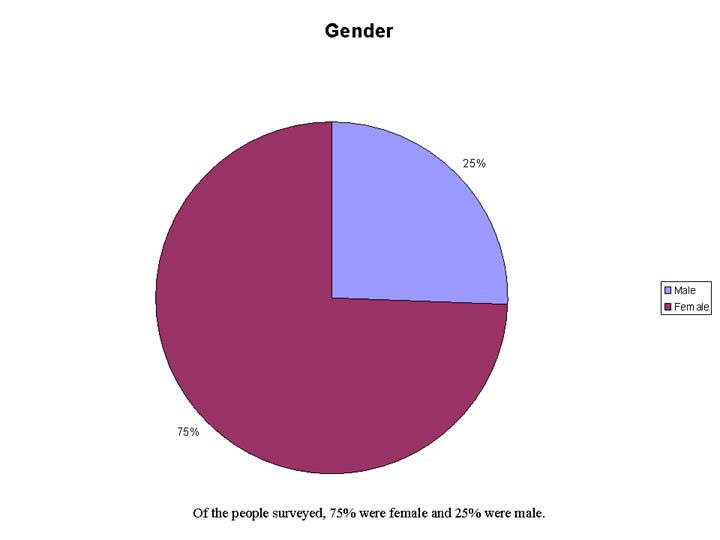
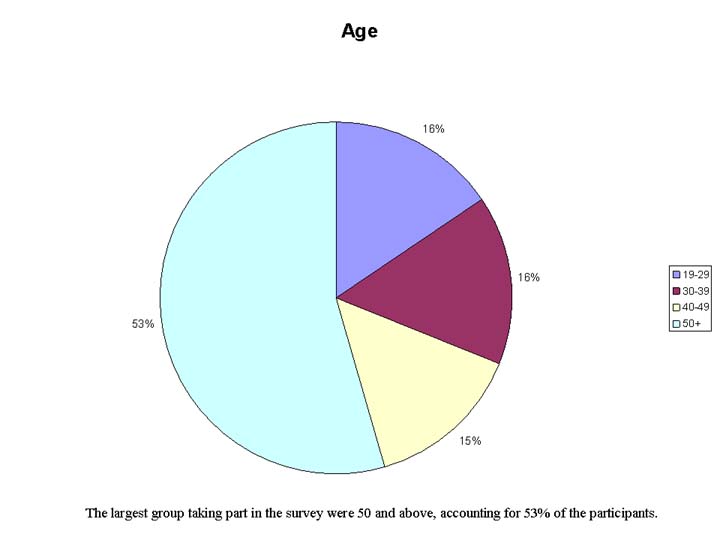
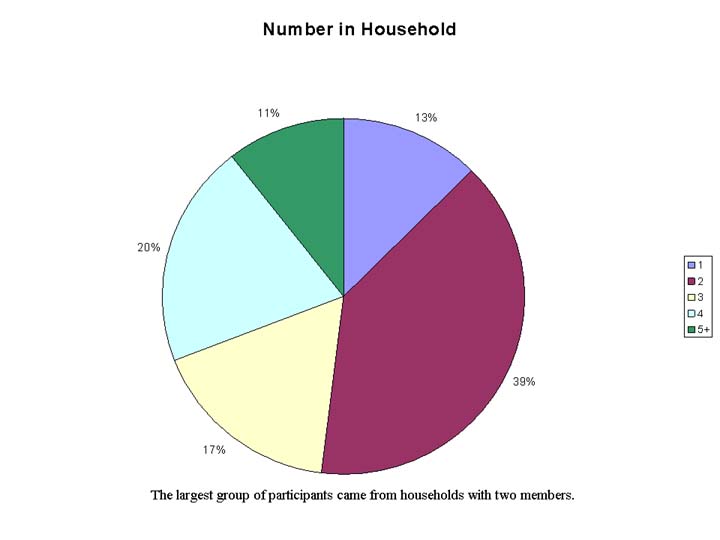
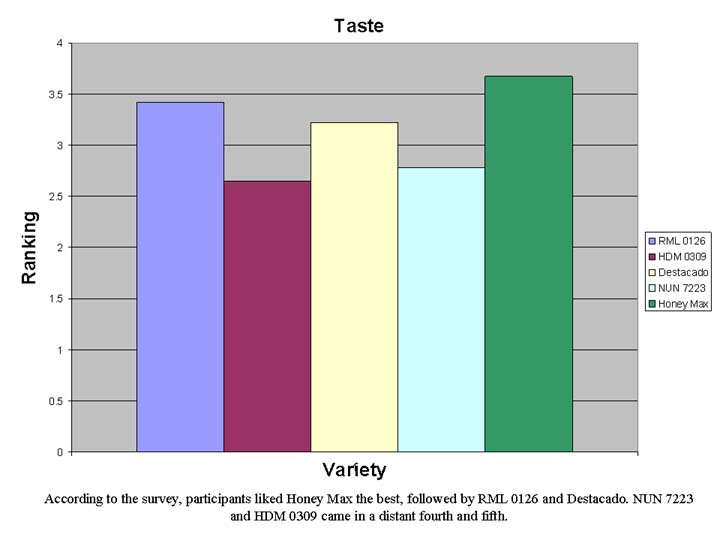
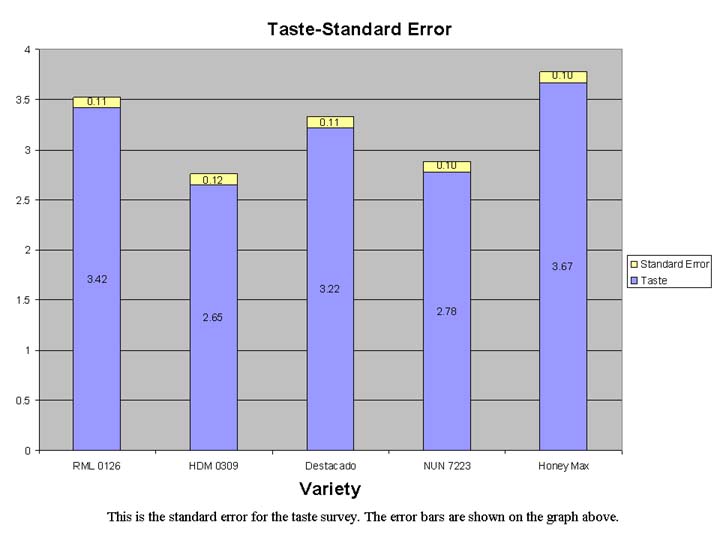
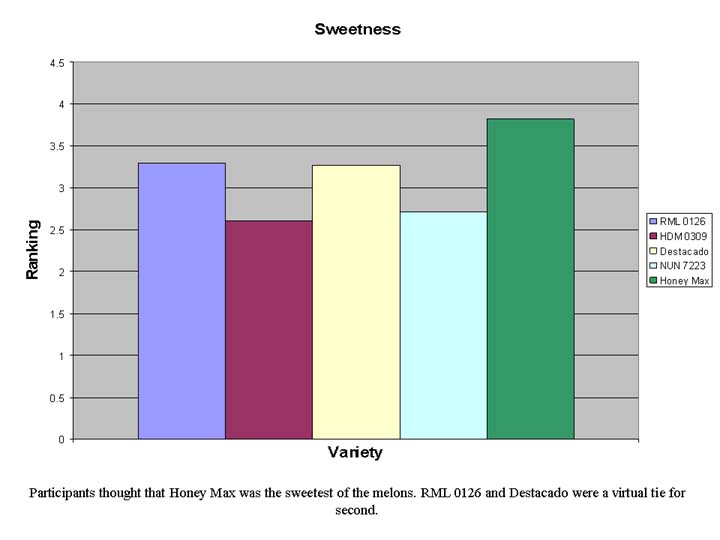
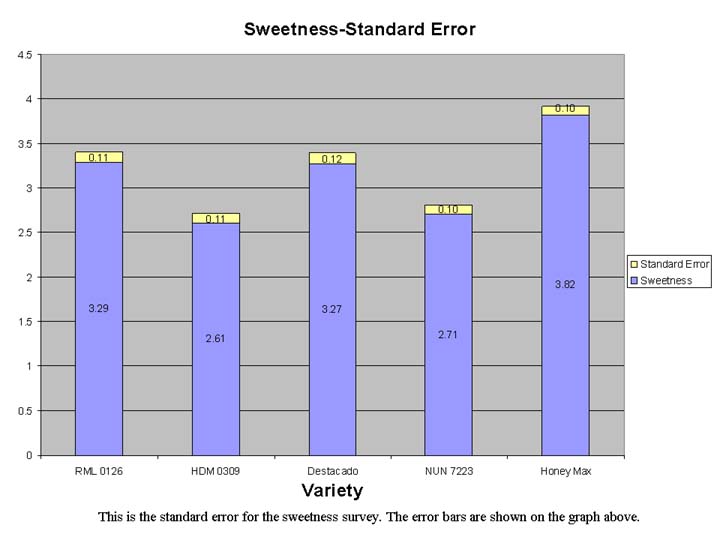

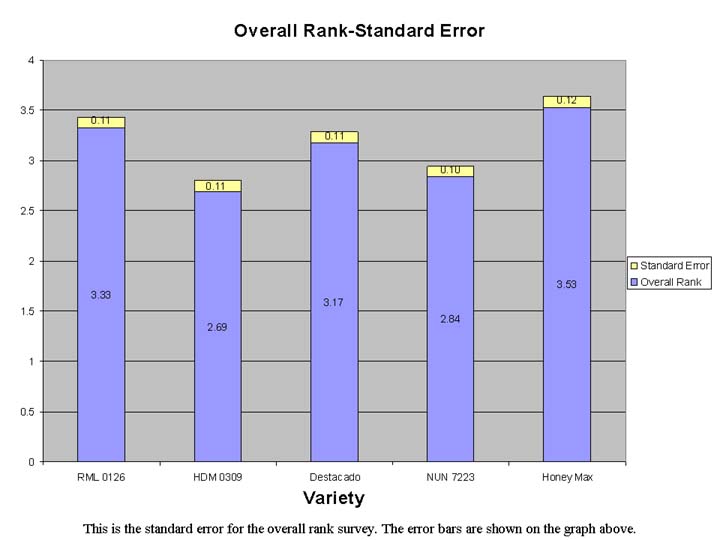
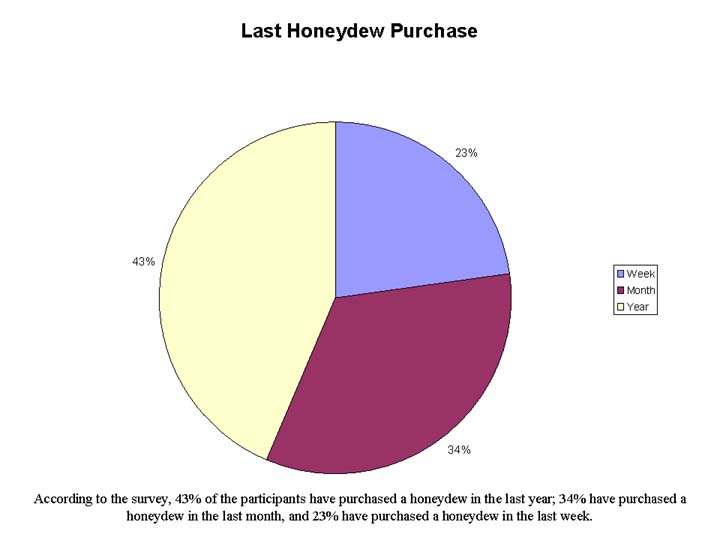
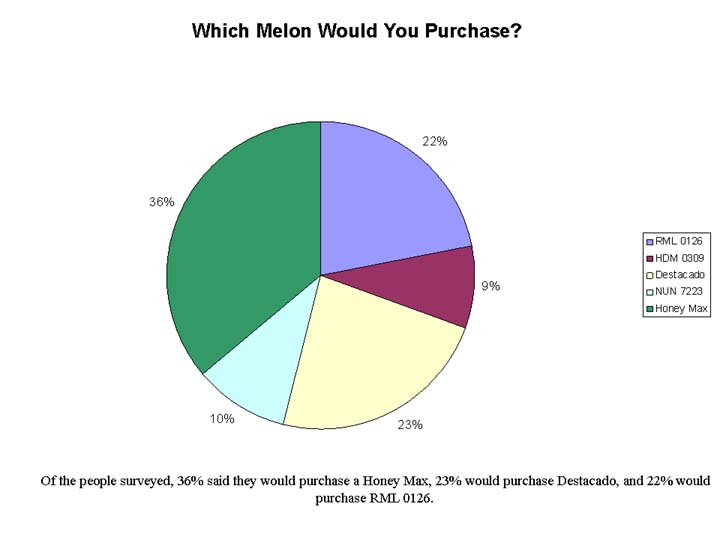 Reviewed 6/30/2022. Jeanine Davis, NC Alternative Crops & Organics Program, Department of Horticultural Science, NC State University.
Reviewed 6/30/2022. Jeanine Davis, NC Alternative Crops & Organics Program, Department of Horticultural Science, NC State University.


